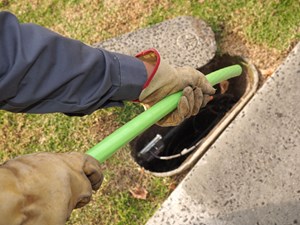FCC Prepares to Vote on $20.4 Billion Fiber Optic Rollout Package
(UC) — The Federal Communications Commission (FCC) is preparing to vote soon on a $20.4 billion package that will help accelerate the build-out of fiber optic, high-speed broadband to rural America.
The Rural Digital Opportunity Fund (RDOF) was originally announced by FCC Chairman Ajit Pai in August 2019 and is meant to build on the success of the commission’s previous program to improve rural internet speeds called the Connect America Fund Phase II.
On Jan. 8, Chairman Pai presented the final rules of the program to his colleagues to be voted on at the Commission’s Open Meeting on Jan. 30.
The FCC has been trying to bridge what it calls the “rural digital divide” for years by funding programs designed to increase high-speed broadband internet availability to areas of the U.S. that have seen much slower adoption of this technology.
From the early days of widespread internet adoption in American homes, most connections were provided by copper wiring or satellite for areas that were not easily accessible by wired infrastructure.
Internet speed is measured in Megabits per second or the number of bits of information that can be transferred every second. 1 Megabit is 1 million bits. The early copper and satellite connections usually provided top speeds of 18 Megabits per second (Mbps) download and 1 Mbps upload.
The RDOF will institute a new Commission minimum standard of 25/3 Mbps.
In recent years, copper and satellite connections have been surpassed by the much faster speeds brought by fiber optic cabling offering speeds over 1 Gigabit per second.
While most major cities have adopted fiber optic connections, Internet Service Providers (ISPs) have struggled with managing the costs needed to deliver these services to more remote areas of the country.
The RDOF hopes to alleviate some of those costs by allocating funds using a reverse-auction format across two phases.
Phase I would allocate $16 billion to target areas that are wholly unserved (no 25/3 Mbps service offered) and Phase II would distribute the remaining funds to target areas that are partially served.
Related News
From Archive

- Glenfarne Alaska LNG targets late-2026 construction start for 807-mile pipeline project
- U.S. water reuse boom to fuel $47 billion in infrastructure spending through 2035
- $2.3 billion approved to construct 236-mile Texas-to-Gulf gas pipeline
- Major water pipe break in Puerto Rico hits over 165,000 customers
- Potomac River Tunnel project enters construction phase beneath Washington, D.C.
- Pennsylvania American Water launches interactive map to identify, replace lead water service lines
- Trump's tariffs drive $33 million cost increase for Cincinnati sewer project
- Utah city launches historic $70 million tunnel project using box jacking under active rail line
- Tulsa residents warned after sewer lines damaged by boring work
- Fatal trench collapse halts sewer construction in Massachusetts; two workers hospitalized




Comments